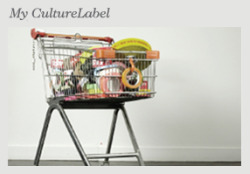“Come And Join Our Community of Culture Shoppers.” That’s one of the taglines employed by the new British site, CultureLabel.com, now in beta, which is self-described this way:
Hello! CultureLabel.com is the first online platform to curate and showcase the best artist-designed and limited-edition products from over 60 leading galleries, museums, artists and culture institutions.
 Though most brands on the site are British, it has invited cultural institutions from around the world, and it looks as if the Museum of Modern Art has signed up, but isn’t present yet. You can read more about CultureLabel in The Art Newspaper, which recently posted an article on its website about it, and the Wall Street Journal, which published an article several days ago.
Though most brands on the site are British, it has invited cultural institutions from around the world, and it looks as if the Museum of Modern Art has signed up, but isn’t present yet. You can read more about CultureLabel in The Art Newspaper, which recently posted an article on its website about it, and the Wall Street Journal, which published an article several days ago.
Sounds like a good idea to me, especially for small museums, but I decided to put Five Questions to an expert on museum merchandising, Rena Zurofsky, who — as you can see on her website — has advised clients like Lincoln Center and the Philbrook Museum.
1) How important are store sales to American museums, and how are sales doing during this recession?
Museum stores have become expected amenities. They support educational missions by selling catalogues and books and…they are considered tools for extending the “brand.” … Whether they actually enhance income or not depends on quite a few factors, not least of which is the level of traffic to the institution itself. Also important will be the popularity or notoriety of a given exhibition. Web sales will enhance the bottom line, but again, generally only if on-line shoppers know to look for that institution. Many shops probably operate at break-even rather than significant revenue-enhancement.
[Read more…] about What’s So Great About CultureLabel? Five Questions




